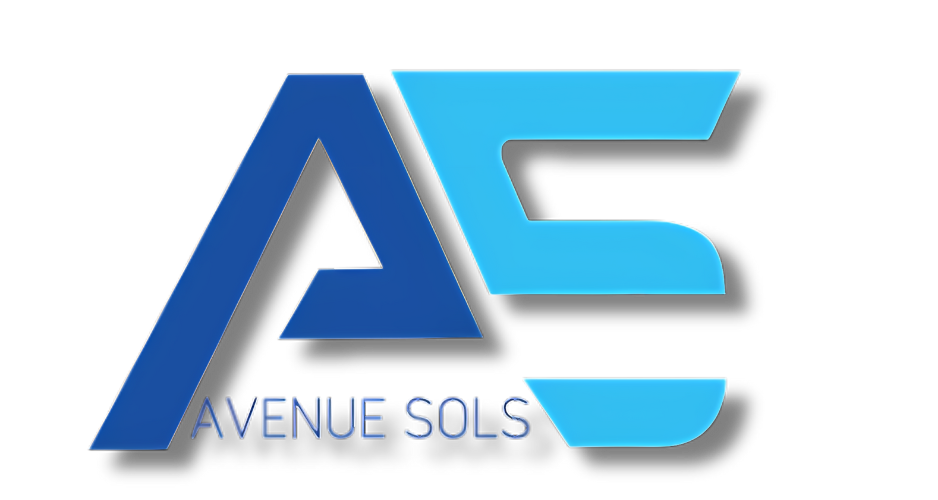
In the vast digital jungle, your website is your majestic, SEO-optimized treehouse. Its structure, its pathways, its hidden treasures – all meticulously designed to entice search engine spiders and human explorers alike. But building the perfect digital abode requires more than just aesthetics. Enter SEO best practices: the secret herbs and spices that infuse your website with ranking power and user enchantment.
Here, at Avenue Sol’s, we understand the intricate dance between SEO and website architecture. So, strap on your explorer’s hat, grab your trusty scroll (aka this blog), and let’s delve into the 15 best practices that will transform your website into a SEO magnet.
Before a single brick is laid, we map the path! Keyword research is your compass, guiding you towards relevant search terms your target audience uses. Imagine unearthing buried treasure chests overflowing with keywords – long-tail, short-tail, local, global – each a key to unlocking traffic and engagement. Armed with this newfound knowledge, you can craft compelling content and structure your website to cater to those seeking your digital bounty.
“I cannot give you the formula for success, but I can give you the formula for failure. It is: Try to please everybody.”
– Herbert Bayard Swope
Picture your website as a sprawling castle, where every room leads to another, creating a seamless journey. That’s website hierarchy! Organize your pages logically, from broad categories to specific sub-pages, ensuring users (and search engines) can easily navigate the depths of your information. Think of it as a well-marked trail, guiding both human adventurers and algorithmic crawlers to the exact treasures they seek.
Simplifying URLs: Less is More, Search Engine Style
Imagine trying to decipher a riddle written in hieroglyphics! Long, cryptic URLs are just as confusing to search engines. Craft clear, concise URLs that reflect the content of each page, using relevant keywords and readable language. Think of them as signposts, pointing not just to a specific room, but to the specific treasure within.
4. Optimizing Titles and Meta Descriptions: Enticing Headlines for Your Digital Oasis
Titles and meta descriptions are your website’s window displays, enticing passersby to peer inside. Craft compelling titles rich in relevant keywords, making them irresistible click-bait for search engines and users alike. Meta descriptions, like miniature trailers, should offer a glimpse into the treasures awaiting within each page, further piquing the interest of your digital explorers.
5. Internal Linking: Weaving a Web of Discovery
Imagine a world where every path leads to another, each step revealing a new wonder! Internal linking connects related pages within your website, creating a web of information that keeps users engaged and search engines happy. Strategically placed links, like hidden portals, guide users on deeper dives into your digital domain, increasing dwell time and boosting SEO juice.
6. Mobile-First Mentality: Catering to the Digital Nomads
The modern explorer navigates the world with a phone in hand. Make sure your website welcomes them with open arms! A mobile-friendly design, like a well-worn travel map, should adapt to any screen size, ensuring a smooth and seamless journey for all devices. Responsive layouts and optimized loading speeds are your trusty steeds, ensuring no digital nomad gets lost in the wilderness of a clunky website.
7. Image Optimization: Visual Storytelling with SEO Flair
Pictures paint a thousand words, and in the digital realm, optimized images speak volumes to search engines. Use descriptive filenames and alt tags, like hidden captions, to tell the story behind each image, incorporating relevant keywords to lure in both users and algorithms.
8. Speed is Key: Don’t Make Users Wait on a Dial-Up Donkey
Imagine trekking through a jungle choked with vines! A slow website is just as frustrating. Optimize your website’s loading speed, like clearing the path of obstacles, by compressing images, minifying code, and leveraging caching mechanisms. A fast website keeps users engaged, reduces bounce rates, and earns points with search engines.
9. Structured Data: Labeling Your Treasures for Easy Discovery
Think of structured data as detailed tags placed on your digital artifacts, making them easily indexed and understood by search engines. Schema markup, like detailed labels on museum exhibits, helps search engines interpret your content accurately, boosting your chances of appearing in rich snippets and featured results.
10. Local SEO: Claiming Your Territory on the Digital Map
If your business has a physical location, claim your spot on the digital map! Local SEO best practices, like optimizing your Google My Business listing and incorporating local keywords, ensure your website pops up when someone searches for businesses like yours in your area. Think of it as planting your flag on the local digital landscape, claiming your territory and attracting nearby digital explorers.

SEO is a Cost-Effective Advertising Strategy
One SEO component called off-site SEO ensures that users of external pages or of social media can find your website. Being optimized for SEO increases the site’s potential to draw customers from other platforms other than the search engine. For instance, when you post content and links to your page on Facebook or Twitter, you are able to promote your website and attract more customers. One of the main goals of SEO is to attract the targeted audience through organic searches. The number of visitors to your site influences your sales and subscriptions. It also promotes the marketing of your products and services. Increased inbound traffic is always good for business because it equates to more conversion opportunities.
Some SEO-related tools such as the Google Keyword Planner and Google Analytics provide quantitative data to help you understand your market, analyze the trends, and know your competitors’ standings. It helps you identify popular and valuable keywords so you can decide how to structure or revise your content. It also gives you insights on your market’s behavior such as location, times of activity, frequency of searches, technologies used, product preferences, etc. All these metrics are useful in helping you get to know your audience, their needs, and their expectations.
-
Embrace Structured Content: Formatting your content with headings, subheadings, and bullet points improves readability and helps search engines understand the hierarchy of your information. Think of it as organizing your treasure chest into neat compartments, making it easier for everyone to find what they’re looking for.
-
Befriend the Robots.txt and Sitemap: These documents act as maps for search engine crawlers, guiding them through your website’s structure and highlighting the pages you want them to index. Optimize these files to ensure your website is fully explored and understood by search engines.
-
Break Up Long-Form Content: While rich and informative content is great, remember, attention spans are fleeting online. Consider splitting long-form articles into smaller, digestible chunks with internal linking between them. This keeps users engaged, improves readability, and offers more entry points for search engines.
-
Monitor and Adapt: SEO is an ever-evolving landscape. Use analytics tools to track your website’s performance, identify areas for improvement, and adapt your website architecture accordingly. Think of it as constantly updating your map based on your explorations, ensuring your digital treehouse remains a beacon of SEO excellence in the ever-changing digital jungle.
Conquering SEO: 15 Best Practices for Building a Rock-Solid Website Architecture
Ready to climb the SEO mountain and reach peak visibility? Building a strong website architecture is like laying the foundation for a skyscraper – it’s crucial for both stability and reaching new heights. In this guide, we’ll explore 15 essential best practices to ensure your website’s structure supports your SEO goals and attracts search engine love.
1. Plan Your Journey: Keyword Research is Key
Before building, you need a blueprint! Conduct thorough keyword research to understand what your target audience searches for. These keywords will guide your website structure and content creation.
2. Keep it Simple, Silly: Prioritize User Experience
Think of your website as a bustling marketplace. Users should be able to navigate easily and find what they need quickly. Keep your site structure clear, logical, and intuitive.
3. Flat is the New Fancy: Optimize for Shallow Depth
Imagine users as explorers traversing your website. Aim for a “flat” structure with fewer nesting levels. This makes it easier for search engine crawlers to discover all your valuable content.
4. Internal Linking: Connect the Dots
Think of internal links as helpful signs guiding users (and search engines) through your website. Strategically link relevant pages to one another, creating a strong internal web of information.
5. URLs: Speak Search Engine
Your URLs are the addresses guiding users to your content. Keep them descriptive, short, and keyword-rich to give search engines a clear understanding of each page’s topic.
6. Meta Descriptions: The Mini Megaphone
Think of meta descriptions as your website’s elevator pitch. Craft compelling and keyword-rich snippets that accurately summarize each page and entice users to click.
7. Mobile-First Mindset: Responsive is the New Reality
In today’s mobile-first world, your website needs to adapt to any screen size. Choose a responsive design that ensures a seamless experience for users on desktops, tablets, and smartphones.
8. Speed Demons: Optimize for Lightning-Fast Loading
Nobody likes a slow website. Optimize your images, code, and hosting to ensure your pages load quickly and keep users engaged.
9. Sitemaps: The Blueprint for Crawlers
Think of a sitemap as a detailed map for search engine crawlers. Submit your sitemap to major search engines like Google and Bing to help them understand your website structure and index your content efficiently.
10. Structured Data: Speak the Search Engine Language
Structured data provides additional information about your content, like product details, event dates, or local business information. This helps search engines display your content in richer, more informative ways, potentially leading to higher click-through rates.
11. Fresh Faces: Keep Your Content Updated
Search engines love fresh content! Regularly update your website with new and valuable information to keep users engaged and signal relevance to search algorithms.
12. Backlinks: The Vote of Confidence
Think of backlinks as recommendations from other websites. Encourage high-quality websites to link to your content, indicating to search engines that your site is trustworthy and valuable.
13. Monitor and Analyze: Data is Your Compass
SEO is an ongoing journey. Use analytics tools to track your website traffic, keyword rankings, and user behavior. This data helps you identify areas for improvement and adjust your strategies accordingly.
14. Stay Informed: Embrace Algorithm Updates
Search engine algorithms are constantly evolving. Stay updated on the latest changes and adjust your SEO practices accordingly to ensure your website remains visible.
15. Don’t Be a Black Hat: Play by the Rules
It’s tempting to take shortcuts, but avoid “black hat” SEO tactics like keyword stuffing or link buying. They might provide temporary gains but can ultimately lead to penalties and damage your website’s reputation.
Remember, building a strong website architecture is an investment in your online success. By following these best practices and continuously optimizing your website, you’ll be well on your way to conquering the SEO mountain and reaching new heights of visibility!
Bonus Tip: Don’t forget to tailor your website architecture to your specific industry and target audience. Research competitor websites and analyze their successful strategies to gain additional insights.
By combining these best practices with creativity and dedication, you can build a website that’s not just SEO-friendly, but also engaging, informative, and a true reflection of your brand.
Author




